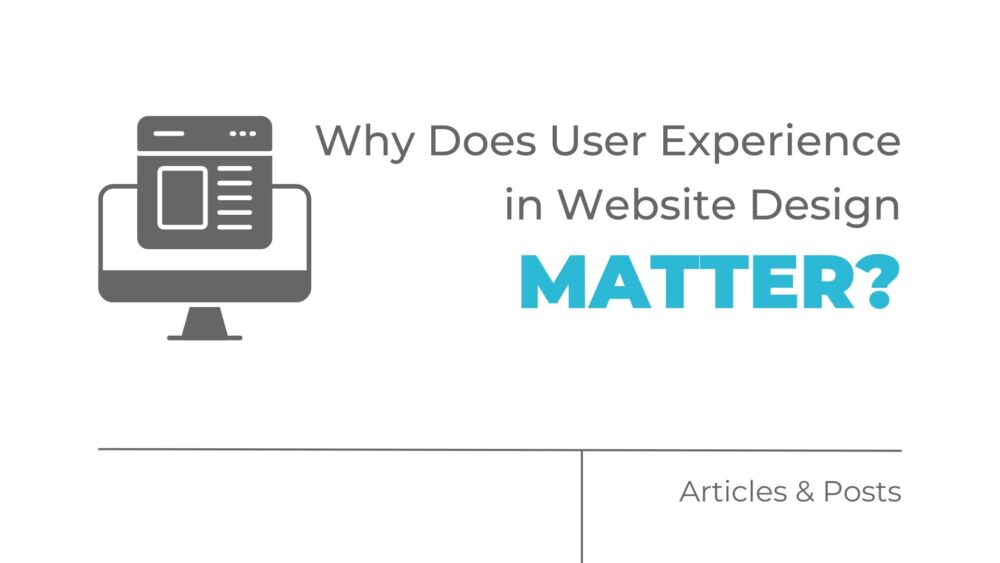Why does user experience in website design matter?
User experience (UX) in website design is important because it directly impacts how users interact with and perceive your site.
A positive UX can increase engagement, reduce bounce rates, and ultimately drive conversions.
Let’s talk about this in more detail.
Why is User Experience Important in Web Design?
Here’s why UX is so important:
Improves User Satisfaction
A well-designed website makes it easy for users to navigate and find what they’re looking for quickly.
When users have a positive experience, they’re more likely to stay longer, explore more, and return in the future.
Increases Conversion Rates
Good UX design can lead to higher conversion rates.
By making it easy for users to complete desired actions—like signing up for a newsletter or making a purchase—you can turn visitors into customers more effectively.
Reduces Bounce Rates
When users find a website difficult to navigate or slow to load, they often leave quickly, increasing the bounce rate.
A user-friendly design keeps users engaged and encourages them to spend more time on your site.
How to Improve User Experience on a Website
We should always be working to make things better, including for our site users.
Simplify Navigation
Clear and intuitive navigation helps users find what they need without frustration.
Use straightforward menu structures and include a search function for easy access to information.
Optimize Load Times
Fast-loading pages make users happy and reduce bounce rates.
Compress images, use efficient coding practices, and use browser caching to speed up your site.
Make It Mobile-Friendly
With more people accessing websites from mobile devices, having a responsive and mobile-friendly site is essential.
A responsive design adapts to different screen sizes, providing a seamless experience across all devices.
Use Clear Calls to Action (CTAs)
Effective CTAs guide users toward desired actions, like signing up for a service or downloading a resource.
Make CTAs stand out with contrasting colors and clear, concise text.
Fundamental Elements of a Well-Designed Website and How They Contribute to User Experience
These are things you need to make sure you pay attention to and do well.
Visual Design
A visually appealing website captures attention and creates a positive first impression.
Use a consistent color scheme, high-quality images, and readable fonts to enhance visual appeal.
Content Quality
High-quality, relevant content keeps users engaged and provides value.
Always ship content that is clear, concise, and well-organized, addressing the needs and interests of your audience.
Accessibility
An accessible website allows all users, including those with disabilities, to interact with your site effectively.
Use alt text for images, provide transcripts for videos, and make sure your site is navigable via keyboard.
Consistency
Consistent design elements, such as fonts, colors, and layouts, create a cohesive and professional look.
Consistency also helps users learn and predict where they can find information on your site.
Tips for Maintaining Good User Experience
This is not one-and-done process. UX design is something you have to keep up with.
Regularly Update Content
Keeping your content fresh and up-to-date maintains user interest and improves SEO. Regular updates show that your website is active and relevant.
Conduct User Testing
Regularly testing your website with real users can identify potential issues and areas for improvement. Use feedback to make data-driven decisions that enhance UX.
Monitor Analytics
Track user behavior on your site using analytics tools. Pay attention to metrics like page views, bounce rates, and conversion rates to understand how users interact with your site and where you can make improvements.
Keep It Simple
Avoid overloading your website with too much information or too many features. A clean, simple design helps users focus on what’s important and improves overall usability.
At the End of the Day
Understanding why user experience in website design matters is essential for creating sites that are not only visually appealing but also functional and user-friendly.
By focusing on UX, you can improve user satisfaction, boost conversions, and create a lasting positive impression.


Comments are closed.